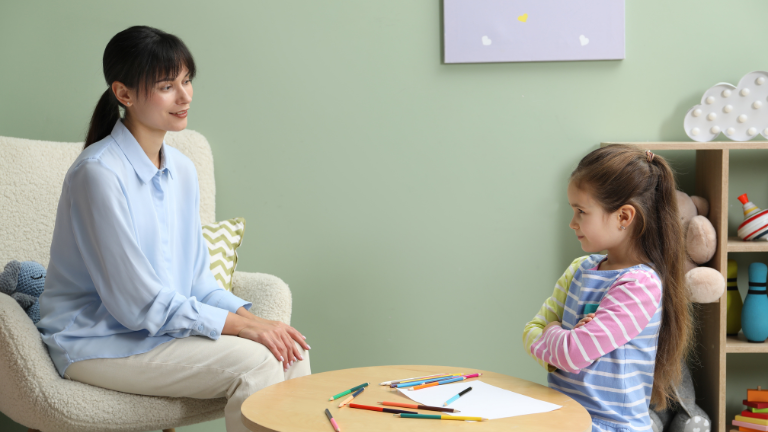Understanding Anxiety: What It Is and How It Affects Your Life
Anxiety is more than just an occasional feeling of nervousness before a big presentation or event. It is a real mental health condition that affect millions of people in worldwide. Understanding anxiety and its impact on daily life can help individuals manage it more effectively and reduce its overwhelming effects. Dr. Ruchi Gupta, a renowned clinical psychologist, specializes in treating anxiety and other mental health conditions with a compassionate and evidence-based approach. Through her work, Dr. Ruchi Gupta has helped countless individuals regain control over their emotions and mental well-being.
What is Anxiety?
At its root & anxiety is the body’s natural response to the stress. It refers to a sense of fear or worry of an unknown end. While anxiety is a normal response to certain situations, such as before an important exam or during a challenging conversation, it can become problematic when it persists or intensifies without a clear reason. This persistent anxiety often interferes with daily life, making it difficult to function at work, school, or in social settings.
How Anxiety Affects Your Life
When anxiety becomes chronic, it can take a significant toll on various aspects of your life. For many people, it manifests as constant worry, physical symptoms like heart palpitations, or a sense of impending doom. Here’s a closer look at how anxiety can affect different parts of life:
Mental Health
Anxiety is often linked to other mental health conditions, such as depression. The constant cycle of worrying and feeling anxious can drain mental energy, making it difficult to concentrate, think clearly, or engage in daily tasks. This leads to a reduced quality of life, as individuals may find themselves trapped in a cycle of negative thinking.
Physical Health
Chronic anxiety can also affect physical health. The constant activation of the body’s stress response system can lead to headaches, muscle tension, digestive issues, and even heart problems. For many people, anxiety is not just a mental experience but also a very physical one.
Relationships
Anxiety can impact personal relationships. The persistent worry and emotional volatility that come with anxiety can make it difficult to communicate effectively with loved ones. Individuals with anxiety may feel misunderstood or withdraw from others, which can create distance in relationships. It can also affect one’s ability to be present with family or friends, leading to feelings of isolation.
Work and Productivity
Work anxiety can cause disturbances in workplace productivity and general job performance. The fear of making mistakes or the constant worry about deadlines can make it difficult to focus and complete tasks efficiently. For those with social anxiety, the pressure of interacting with colleagues or attending meetings can feel overwhelming, further impacting career progression.
Social Life
An anxious person may develop avoidance behavior where they tend to avoid social situations that may provoke anxiety. This avoidance can result in missing out on enjoyable experiences and opportunities for connection. Over time, this can lead to feelings of loneliness and further exacerbate the anxiety.
Types of Anxiety Disorders
While everyone experiences anxiety from time to time, there are specific anxiety disorders that can significantly impact one’s life. These include:
Generalized Anxiety Disorder (GAD): Characterized by excessive, uncontrollable worry about various aspects of life, such as health, finances, or work.
Panic Disorder: Involves sudden and repeated panic attacks—periods of intense fear and discomfort that can occur without warning.
Social Anxiety Disorder: This is the fear of being judged or humiliated in social situations, which can cause people to avoid interactions.
Specific Phobias: Involve intense fear of specific objects or situations, such as heights, spiders, or flying.
Generalized Anxiety Disorder (GAD): Characterized by excessive, uncontrollable worry about various aspects of life, such as health, finances, or work.
Panic Disorder: Involves sudden and repeated panic attacks—periods of intense fear and discomfort that can occur without warning.
Social Anxiety Disorder: This is the fear of being judged or humiliated in social situations, which can cause people to avoid interactions.
Specific Phobias: Involve intense fear of specific objects or situations, such as heights, spiders, or flying.
Managing Anxiety with Professional Help
Dr. Ruchi Gupta, a highly skilled clinical psychologist, works with individuals to help them understand and manage their anxiety. With personalized treatment plans, Dr. Ruchi Gupta employs a variety of therapeutic approaches, including Cognitive Behavioral Therapy (CBT), mindfulness techniques, and relaxation exercises. CBT helps individuals identify and challenge negative thought patterns that fuel anxiety, while mindfulness practices teach individuals to stay grounded in the present moment.
Steps You Can Take to Manage Anxiety
While professional help is often necessary for managing severe anxiety, there are several things individuals can do on their own to reduce anxiety levels:
Practice Mindfulness
Mindfulness is the process of trying to pay attention to the present moment without making judgments This practice can help individuals break free from the cycle of anxious thoughts and focus on what’s happening right now.
Exercise Regularly
Physical activity helps release tension and stress, which can reduce anxiety. Exercise also boosts endorphins, which are the body’s natural mood lifters.
Improve Sleep Habits
Lack of sleep can exacerbate anxiety. Establishing a regular sleep routine and ensuring adequate rest each night can significantly help in reducing anxiety levels.
Limit Caffeine and Alcohol
Both caffeine and alcohol can increase anxiety. Cutting back on these substances can make a noticeable difference in how anxious you feel.
Connect with Others
Having a support system is crucial. Whether it’s family, friends, or a support group, sharing your thoughts and feelings with others can provide relief and reduce feelings of isolation.
Conclusion
Anxiety is a common yet often misunderstood condition that can affect every aspect of your life. However, it is treatable with the right support and intervention. If you or someone you know is struggling with anxiety, seeking help from a professional like Dr. Ruchi Gupta, a clinical psychologist, can be a transformative step. With the right strategies and guidance, it’s possible to regain control and lead a more balanced, fulfilling life.
Dr. Ruchi Gupta’s comprehensive approach to mental health helps individuals understand the root causes of their anxiety and equips them with the tools they need to manage it effectively. Whether through therapy, lifestyle changes, or a combination of both, anxiety doesn’t have to rule your life.
Dr. Ruchi Gupta’s comprehensive approach to mental health helps individuals understand the root causes of their anxiety and equips them with the tools they need to manage it effectively. Whether through therapy, lifestyle changes, or a combination of both, anxiety doesn’t have to rule your life.
Recent post
Becoming a new mother brings joy, but sometimes dark clouds appear. Many women feel sad, worried and tired after childbirth. If you’re experiencing these feelings, postpartum depression...
Clinical Expertise Delivering Reliable Treatments for Depression Mohali Feeling sad, hopeless or lost can be scary. But there’s hope. Finding the right treatments for depression Mohali can...
Restoring Quality of Life Through Somatoform Disorder Therapy Mohali Living with unexplained body pain can feel scary and lonely. When doctors can’t find what’s wrong, it becomes even...
Ethical, Expert Mental Health Care With Clinical Consultant Mohali Finding the right mental health support can change your life completely. When you need someone who truly understands your struggles...
Life-Changing Bipolar Disorder Specialist Mohali With Real Results Living with bipolar disorder can feel like riding an emotional rollercoaster without brakes. But finding the right Bipolar disorder...
Nurturing Emotional Balance Through Child Behavior Counseling Mohali Every child deserves a happy childhood filled with joy and growth. When children face behavioral challenges, parents often feel...







